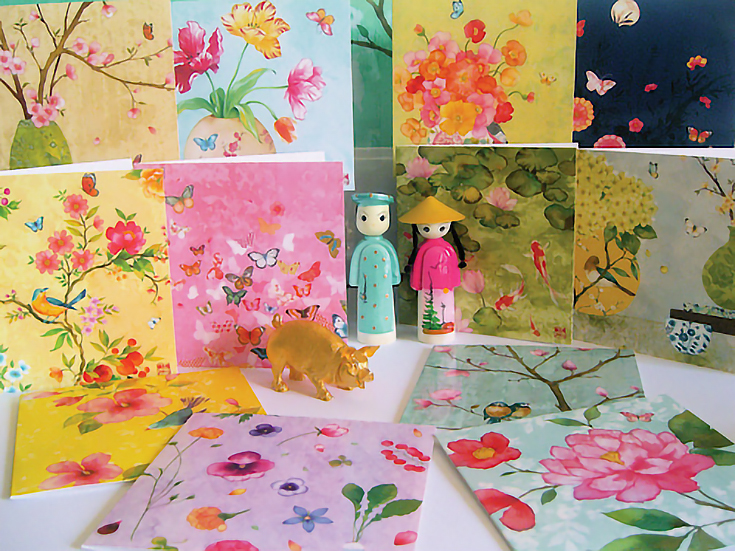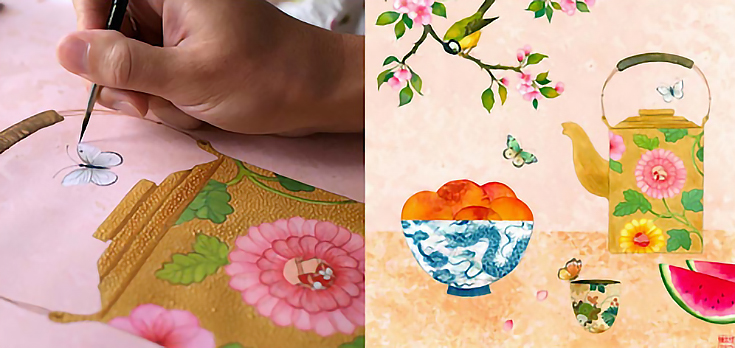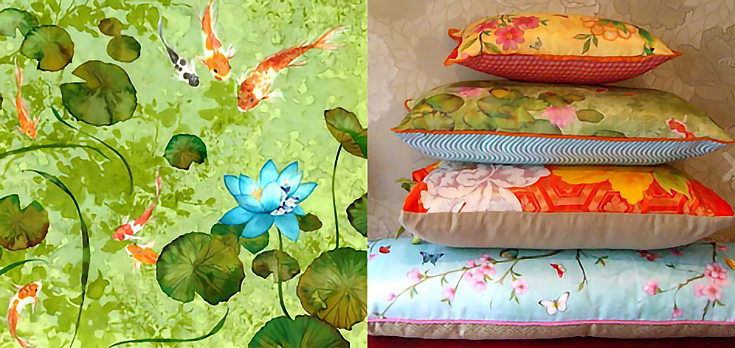 Prior to becoming a licensed artist, Australian designer Chris Chun paid his dues by working as a textile designer and product manager for home décor. Today he spends his days creating original works of art for collectors, and commercial work for his licensing clients.
Prior to becoming a licensed artist, Australian designer Chris Chun paid his dues by working as a textile designer and product manager for home décor. Today he spends his days creating original works of art for collectors, and commercial work for his licensing clients.
While his work is inspired by themes of family, mother nature, food, travel, and the entertainment industry, he’s proud to admit that its main focus comes from “celebrating the joy of life.”
Alyice: Aside from selling your art through private commissions and an online art store, you also license your art. Can you tell us how you got into licensing your art?
Chris Chun: After I had my first solo exhibition, I was approached by a well known UK publisher asking if I would be interested in licensing some of my paintings onto their greeting cards. The funny thing is that I’d bought many of their cards before for personal use so I knew their cards and felt very flattered to be approached. Needless to say, this was my first licensing deal.
Alyice: It’s been said that licensing one’s art means an artist is “working smarter, not harder.” Has this been your experience?
Chris Chun: I think it is probably a combination of both. Even though you definitely need to work smarter, it requires ALOT of hard work, dedication and focus to get your art licensed.
A lot of artists think it is easy, but, in reality, it’s definitely not for the faint hearted.
You need a thick skin to survive in this business and you need to get used to a lot of people saying “No” to your work.
It doesn’t mean they don’t like your work, it may just be not suitable for them at the moment. It can be a number of factors but if you’re going to have a career in art licensing, you can’t take it all personally.
That being said, there’s no better feeling than seeing your work in store or even better in someone’s house and then telling them that you designed this. They get so excited when they find out, and that’s really what I strive for at the end of the day.
Alyice: Getting a manufacturer to take notice of your work isn’t easy. How did you go about finding manufacturers to work with?
Chris Chun: I took the plunge back in 2007 and exhibited at Surtex (art licensing fair in New York). I made most of my contacts there.
Alyice: How can artists educate themselves so they aren’t taken advantage of?
Chris Chun: There are some really great resources online that weren’t available when I started out. Do your research on the web—there’s Tara Reed’s art licensing blog, Surtex.com, and the LinkedIn Group called “The art of licensing”.
Most importantly, don’t ever sign away your copyright.
Alyice: So how do you actually succeed in licensing art?
Chris Chun: To succeed in licensing, your work has to be firstly commercial. By this I mean is that there has to be people out there who would want to buy your work. You also need to be able to show your work on different products so that the client can visualize how your art will look on that card, plate, flag or whatever.
Alyice: What makes art good enough to be licensed?
Chris Chun: Perhaps the most important thing is to make sure your art says “YOU.” Try new things, experiment, play around with different styles and have fun doing it.
There are so many artists out there licensing; it’s an extremely competitive field. Your art has to stand out from everyone else’s work to get noticed. It’s not an easy thing to do. It took me a few years to find my artistic voice.
Alyice: If you could share one tip with artists interested in licensing their own art, what would it be?
Chris Chun: Please DO NOT EVER BLATANTLY COPY anyone else’s work or style. If you do, you can kiss any art career licensing aspirations (or otherwise) goodbye.
Good luck everyone!
You can learn more about Chris and his work at www.chrischun.com.
This post may contain affiliate links.




